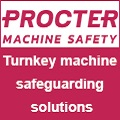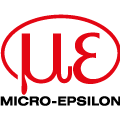
Posted to News on 11th Sep 2023, 11:26
Driving robotics and embedded motion applications

Dean Crumlish, product and applications manager at Copley Controls, explores the use of compact, efficient and powerful nano-type servo drives with innovative thermal management technology and EtherCAT and CANopen support for robotics and embedded motion applications.
To meet the needs of today’s advanced motion control applications, servo drives are getting smaller. However, the power requirements are far from following suit. These applications require powerful, embedded drives that must function in constrained spaces in order to meet the ever-shrinking size requirements of modern machines. To this end, many miniature servo drives can be mounted onto the motor itself or within robotic joints.
Compact, powerful and embedded servo drives play a particularly important role when it comes to robots, which are increasingly taking centre stage across many industries. In healthcare settings, they enable new, state-of-the-art surgical and diagnostic practices. They also play an important role in the semiconductor manufacturing sector for their ability to handle small, delicate parts and complex assemblies with high levels of precision and cleanliness.
And in the world of logistics, mobile robots can navigate warehouses and distribution centres autonomously, streamlining operations and accelerating order fulfilment.
Other important industries for embedded servo drives include aerospace, lab automation and biomedical equipment, which often involve automated guided vehicles (AGV), autonomous mobile robots (AMR) and other complex systems that must handle and transport objects, navigate the environment and accomplish various tasks.
Yet for all the innovations happening in the world of automation, the compact servo drives behind these sophisticated systems must be able to meet a combination of requirements related to motion control, size and power, including:
- Providing high positional accuracy and repeatability
- Achieving excellent dynamic performance, including smooth motion profiles, fast response times and precise speed and torque control
- Supporting real-time communication protocols, such as EtherCAT, to ensure reliable communication between the drives and control system
- Featuring a compact size for mounting onto the motor itself or within the robotic joint
- Packing enough power, despite their small size, to move the robotic arm, AGV or AMR with the utmost reliability and efficiency
Meeting all these requirements is easier said than done, however. Designing powerful, miniaturised servo drives that can perform within the tight confines of robotic joints, AGV chassis and other embedded motion control applications presents a number of design challenges — not the least of which is thermal management.
How to stay cool
As servo drives shrink in size, the surface area available for heat dissipation shrinks as well, making thermal management progressively more challenging. Fortunately, there are a number of design principles that together can maximize the efficiency of even the smallest embedded drives. Copley Controls’ Nano embedded servo drives exemplify these principles to deliver high power density and efficiency (>99%), which helps with managing heat and electromagnetic interference (EMI), as well as supporting size reduction.
Circuit materials: The first and most obvious heat dissipation solution involves an upgrade to the drive’s circuit board materials. The Nano drive, which consists of a four-board PCB stack, uses a single-sided board with a copper-alloy substrate (TClad). This board, which handles power for the device, would traditionally have had an aluminum substrate, but the switch to the proprietary TClad copper alloy resulted in a threefold improvement in thermal conductivity.
Custom components: Another solution involves the use of custom-designed components to increase heat dissipation capabilities. For example, the Nano features custom-designed pins to carry current out of the drive. Not only are the custom pins smaller than a standard connector, but they are also designed to conduct heat away from the drive.
Dynamic gate drive tuning: The output stage consists of two key components – the gate drive integrated circuit (IC) and metal-oxide-semiconductor field-effect transistor (MOSFET) – both of which tend to be standard, off-the-shelf components that are used by all key players in the motor drive world. To maximise the Nano’s thermal management capabilities, Copley Controls makes critical design decisions during their selection process:
- The gate driver IC: The company selects compact, half-bridge drivers with high output current capabilities. Because the output current limits the size of the usable output stage MOSFET, it is important that we select drivers with high-current capabilities
- The output stage MOSFET: These components must feature a small package, low thermal resistance, high current and low drain-source on resistance (RDS(on))
In terms of thermal management, the magic happens in between these two components. Dynamic gate drive tuning controls the timing between the power device turn-on and turn-off to achieve low power dissipation while meeting electromagnetic compatibility (EMC) requirements.
Current sensing. To further reduce heat dissipation, the Nano features some clever methods for measuring current. This novel approach to current sensing uses ultra-low-resistance current sense resistors, enabling precise current sensing with minimal power dissipation.
Finally, the smallest, most powerful servo drives also need to apply a variety of other strategies to minimise heat build-up. In the case of the Nano, these include the overall construction and layout of power components on the board. Copley Controls can also pull a number of levers within the drive’s firmware to further reduce dissipation, if required. For example, one feature – called bus clamping – effectively reduces switching losses by as much as 33%.
At the end of the day, managing the heat on the smallest, most powerful drives does not come down to a single design principle. Instead, it’s the sum of many small, carefully considered design decisions.
Want the latest machine building news straight to your inbox? Become a MachineBuilding member for free today >>

















